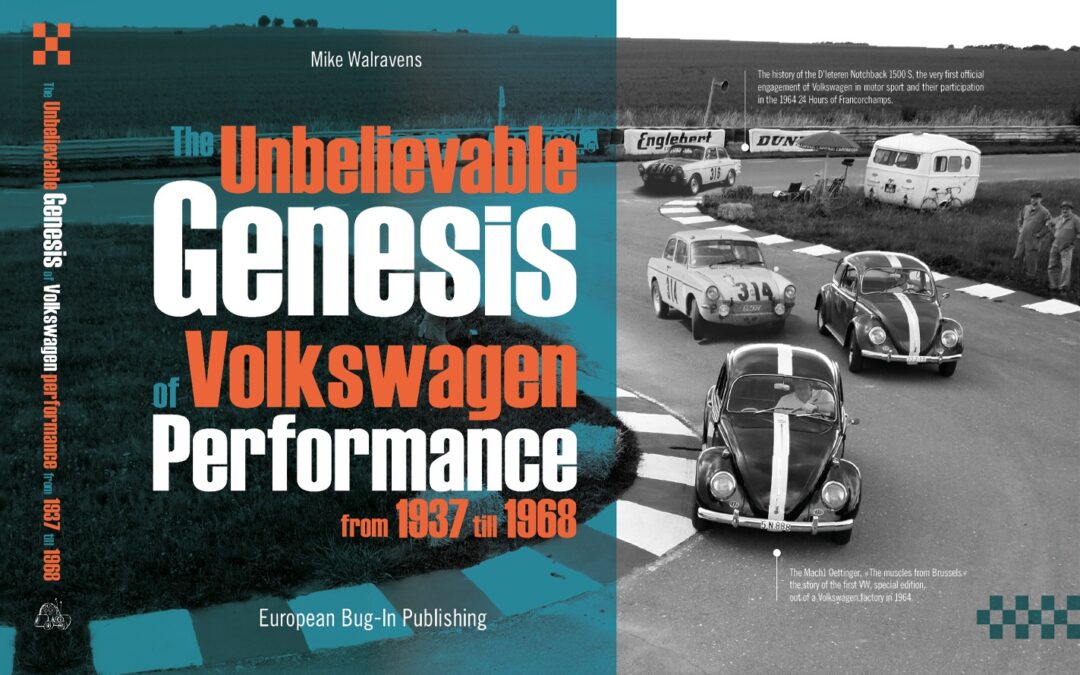
Mick Hill’s colorful book is packed with his signature artwork, and skillfully showcases the cars, drivers, and designers that contributed to the history of Formula 1. Beginning with the flags for hosting countries, it goes on to show every winning car, with details of its designers, drivers, and races won. The book also considers drivers’ helmets, from historic leather caps to modern carbon fiber, as well as the world championship stickers from teams and sponsors, a memento for fans to the race meetings they attended. A complete reference of the first 70 years of the F1 championship, this book will appeal to motor racing fans young and old.
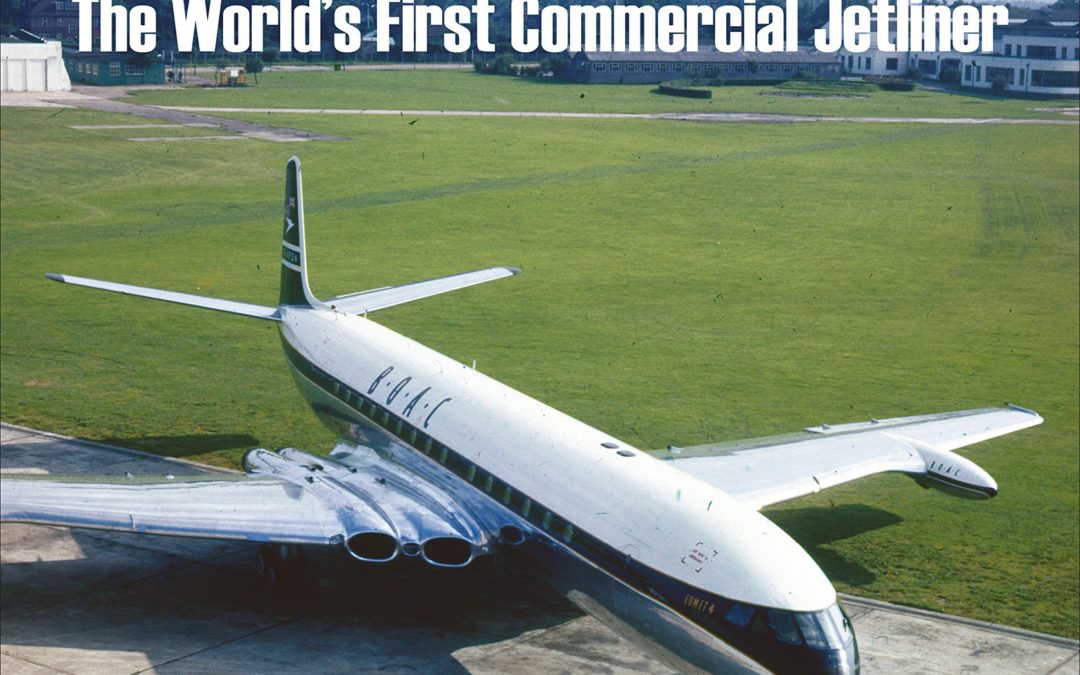
The world got a little smaller in July 1949 when the first jet-powered airliner took to the skies barely four years after the end of the Second World War.Not only was the de Havilland Comet 1 was a lot faster than previous airliners, it could fly higher and further. It was packed with new technology but, perhaps most importantly for those early passengers, it was a quiet, luxurious and even pleasant experience, something that could never be said for the noisy piston-engine aircraft that came before.The Comet’s leadership in jet travel for the future was assured until aircraft began crashing. The first ones were put down to pilot error but two disastrous events in 1954 grounded the fleet and Britain’s advantage over the rest of the world was lost. Boeing caught up with its ubiquitous 707 and the Comet was destined to become but a memory.However, rising from the ashes came a new Comet – one that was bigger and more powerful than before and designed for completely different roles. Where the first Comets had provided an expensive and plush way to travel for the rich few, the new Comet 4s carried more passengers to a multitude of destinations inevitably becoming key carriers for the early package holidaymakers. At the same time they became vital strategic transports for the RAF as the British Empire receded.This book tells the full story of the world’s first jet-powered airliner, from its remarkable beginnings, through its early flight trials program to its entry into service. The type’s military career is also covered, as is its construction; also included in this volume are details of the numerous variants produced and those still surviving as exhibits today. There are also twenty-four superb artworks by world-renowned aviation illustrator Juanita Franzi.
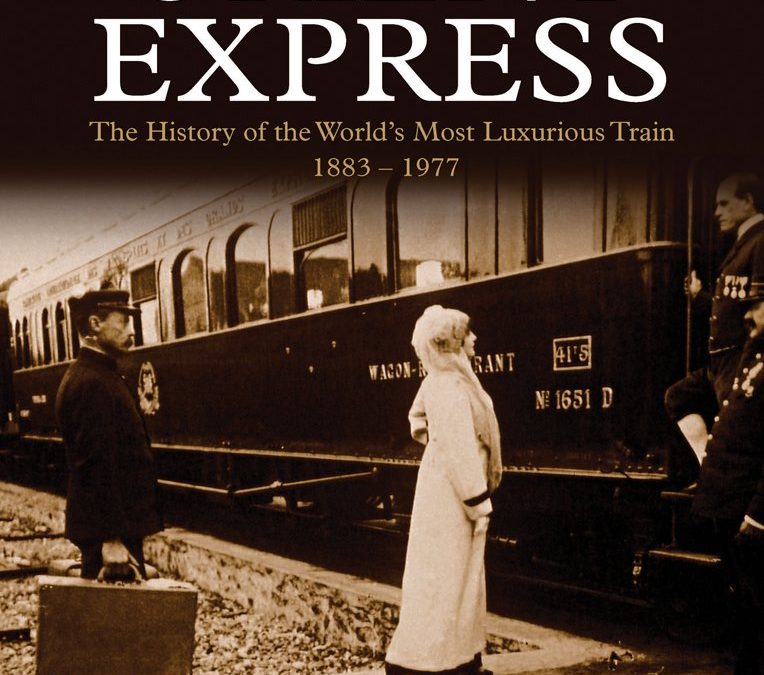
The Orient Express is a name synonymous with luxury train travel in Europe. In 1883, the first train with its gleaming livery and leather-embossed chairs in mahogany-panelled compartments caused a sensation. But by the 1950s and 1960s, the service was becoming ever shorter and European rail travel less stylish. However, in its prime, the Orient Express provided a much-needed luxury service that managed to cross borders and overcome national interests and rivalries. The Orient Express traces the history of the service, from its glamorous beginnings, its popularity with European royalty and heads of state, to its demise in the age of postwar austerity, the Cold War and cheaper air travel. Subsequently revived on a limited scale using some restored original train cars, the mythos of the Orient Express lives on. Illustrated with outstanding black-and-white photographs, many of them seldom seen, The Orient Express offers an intriguing portrait of the birth, heyday, decline – and limited rebirth – of luxury train travel throughout Europe.

Get the Book Everyone is Talking About!
After three years of research, countless interviews, and looking through thousands of photos it’s finally here: Hurley Haywood’s life story.
From his upbringing in Chicago and Wheaton, Illinois, to his chance meeting with Peter Gregg, Hurley Haywood was destined to drive anything he could get his hands on. Life-long relationships with Porsche and the Brumos dealership provided the kinds of opportunities of which most racing drivers only dream.
With three overall victories at Le Mans, five at the Rolex 24 at Daytona, and two at the 12 Hours of Sebring, Haywood is the world’s most successful endurance sports-car racer. In addition, Haywood won several championships and dozens of other races during a career spanning more than 43 years.
Now, in this book of 420 pages with over 650 photos, Haywood tells it all. From the beginning.
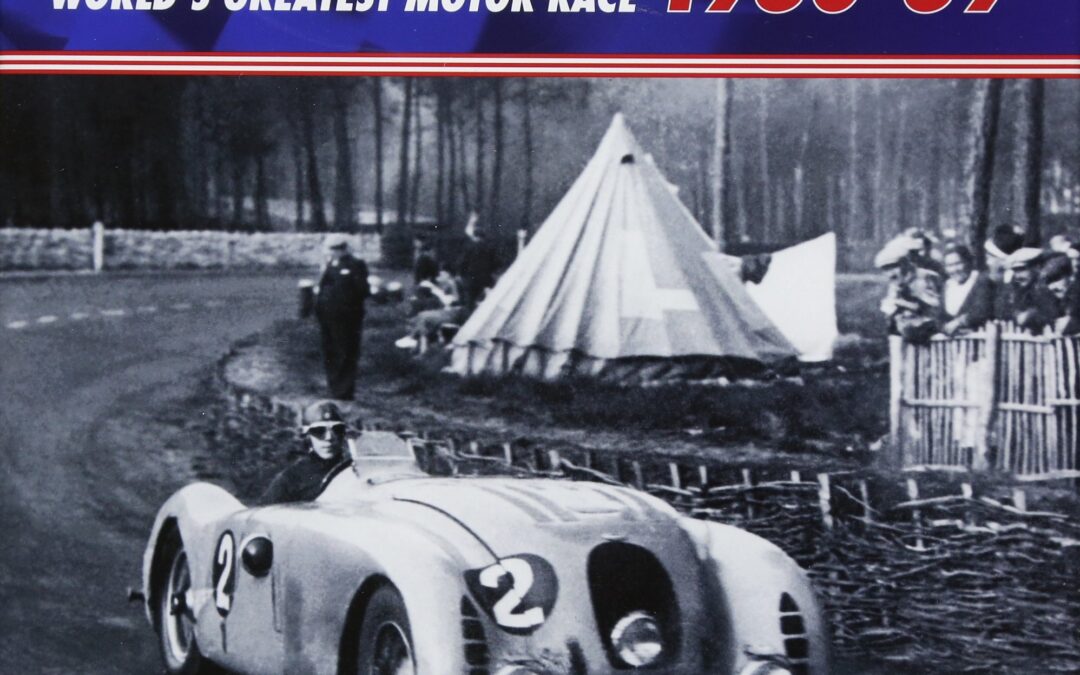
Officially licensed with the ACO, the organisers of the annual Le Mans 24 Hours race, this sumptuous book is the seventh title in this decade-by-decade series and completes coverage of the endurance classic from its very beginning to the end of the 20th century. This title covers the nine races of the 1930s (no race was held in 1936) in which honours were divided between Italian, French and British manufacturers. Each race is exhaustively covered in vivid photographs, an insightful commentary providing more detailed information than has ever been published about the period, and full statistics. Compiled by an acknowledged authority of this legendary race, this series of books is treasured by all enthusiasts of sports car racing.
In the 1930 race Bentley achieved its fourth consecutive success, Woolf Barnato and Glen Kidston the winning drivers in the very same ‘Speed Six’ with which they had won in 1929.
Two of Britain’s greats of the era, Earl Howe and Henry Birkin, won for Alfa Romeo in 1931, beginning a four-race victory streak for the Italian manufacturer.
Tazio Nuvolari, the outstanding Grand Prix ace of the pre-war decade, secured an intensely dramatic last-lap victory in 1933 in the closest Le Mans finish to date.
Lagonda (1935) and Delahaye (1938) secured a win each, while Bugatti took two with the great Jean-Pierre Wimille driving its innovative Type 57 ‘Tank’ cars, with all-enclosing bodywork.
Highly detailed year-by-year treatment of the decade’s nine races, giving unprecedented depth of information and photographic coverage for each year.
Official status provides a number of unique features, including the reproduction of photographs and full-colour race poster artwork from the ACO’s archives.Complete data for each year includes technical regulations, entry list, circuit changes (with diagram), full results and category awards.
The whole work is beautifully designed and presented.
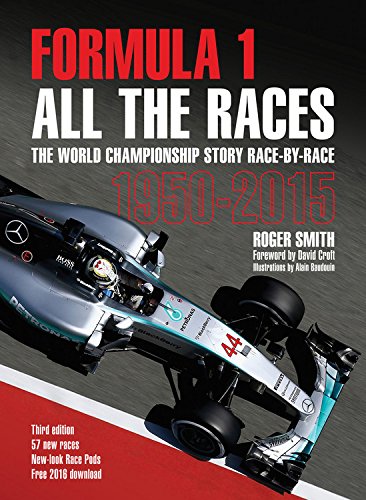
SOLD OUT
This remarkable book is the third edition of an acclaimed work of reference about Formula 1. It has been meticulously researched and written to capture the character and essence of every one of the 935 World Championship races held from the beginning of Formula 1 in 1950 to the end of the 2015 season. Each entry highlights the key events of each Grand Prix from qualifying through to the final outcome as well as spotlighting those incidental happenings so unique to F1 that influenced a race or an unfolding championship battle. Nothing is missed in this unique book of record.
Fully updated three years since publication of the sell-out previous edition.
Each race entry is packed with information, comprising a descriptive text supported by numerous statistics.
935 races, 206 winning cars, 105 winning drivers, 66 seasons, 32 champions.
All race-winning cars illustrated with high-quality artwork by Alain Baudouin.
Decade-by-decade structure: the 1950s (Red to green); the 1960s (From strength to strength), the 1970s (Television stardom), the 1980s (Bernie’s travelling circus), the 1990s (Going global), the 2000s (Front-page news), the 2010s (Money talks).
Appendices give overview listings, including World Champion drivers, World Champion constructors, total wins for drivers and constructors, etc.

Beginning with the arrival of the company founder from Germany, this book tells the story of the early years, the rescue of the brand name by the Standard Motor Company following the Second World War and the inspired idea to use the Triumph name on a new sports car – the TR. The Triumph TR cars were built on a minimal budget yet would go on to achieve significant success in motor sport and encompass a range of cars that would remain in one form of another for nearly thirty years. Triumph TR – From Beginning to End gives a complete description of all models, competition success, a study of the derivative models, owners’ accounts and living with a TR today.

1927 saw the release of what was to become the first major aviation film ever released… William Wellman’s epic production of “Wings”. It was the beginning of what would become a much beloved film genre for aviation and film buffs alike.
In this FIRST volume of “When Hollywood Ruled the Skies”, author and historian, Bruce Orriss documents the history of “Wings” and each of the WWI films that followed ending with Tony Bill’s production of “Flyboys” in 2006.
A total of 35 films are covered in detail including cast and crews, story synopsis and background details on each production. The book is illustrated profusely with hundreds of never-before-seen photographs of the actors, pilots and airplanes used in each film.
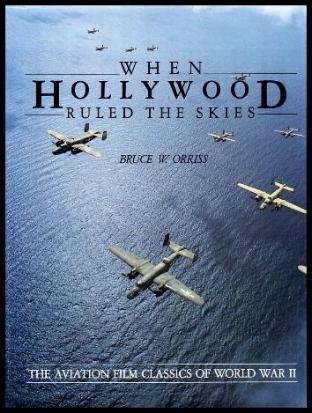
In this THIRD volume on the history of Hollywood’s military aviation films, author and historian Bruce Orriss examines the aviation films of World War II, beginning with “Eagle Squadron” in 1942 and ending with “Red Tails” in 2006, a total of 48 films in all.
The book presents the radical changes in aim and purpose that these films have undergone in the past seventy-two years, and gives special emphasis not only to the stories that these aviation films told, but also to the stories behind their making and the people who made them.
Profusely illustrated, with over 400 photographs, the book includes lists of casts and crews, story synopsis, production details and interviews with many of the participants.

It wasn’t very long after the first commercially viable automobiles came on the scene that ambitious engineers began to dream of vehicles that could travel not only on land but also in the air, or by water. For nearly a century, talented designers have created unique dual purpose vehicles for land, water and air (in various pairings) for both civil and military applications. Sometimes converted from standard vehicles, sometimes beginning as clean-sheet designs, these machines have met the engineering and economic challenges of dual-mode travel with varying degrees of success. This book describes a fascinating array of these vehicles from the United States and abroad, including flying automobiles, roadable aircraft, amphibious vehicles, hovercraft, road-rail trains, and triphibious inventions.
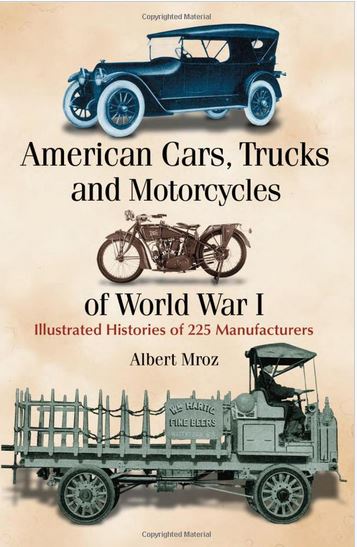
Even before American involvement in World War I, motor vehicle manufacturing in the United States was widespread and diverse, though the war served to expand the market rapidly. Hundreds of companies were building vehicles for military as well as civilian use during this time. From their beginnings until their demise, the histories of 225 companies that manufactured cars, trucks or motorcycles for the civilian market are provided, along with illustrations and specs of representative models from each company that existed in 1917 and 1918.

Includes techniques you can use for home and automotive repair, metal fabrication projects, sculpture, and more
Master MIG welding and the metal fabrication techniques you need to repair, create, and duplicate projects in your home welding studio. Learn to Weld starts with the basics: setting up your studio, the right safety gear and safety procedures, and the equipment and materials you will need to begin with welding. With the help of step-by-step metalworking photos and tutorials, you will learn detailed techniques for cutting and grinding, and for joinery using a MIG welder. Practice the techniques and projects, and you’ll soon be able to repair, create, and duplicate metal fabrication projects in your own welding studio. Best of all, you will have both the fundamental skills and the confidence you need to create whatever is in your imagination. With Learn to Weld you’ll be equipped to conquer a world of welding projects.

Unconventional, flamboyant, ground-breaking, colourful, controversial — the Benetton Formula 1 team was all of those things.
Defying perceptions as the rebels of Formula 1, Benetton achieved great success, particularly in the two glorious seasons of 1994 and 1995 when the team swept aside the big names — Williams, McLaren and Ferrari — to claim back-to-back World Championship titles for up-and-coming Michael Schumacher. This book tells the entire 1986–2001 history of the Benetton team for the first time with insightful contributions from many of the key participants, including Flavio Briatore, Alessandro Benetton, Pat Symonds and Rory Byrne.
- Beginnings: after three seasons in F1 as a sponsor, Benetton purchases ailing Toleman and creates its own BMW-powered team for 1986, taking a first win that year with Gerhard Berger.
- Growing in stature: with Flavio Briatore arriving to run the team and using Ford engines, Benetton edges towards consistently strong performances, including two consecutive wins for Nelson Piquet at the end of 1990.
- The key driver: the inspired signing of Michael Schumacher takes Benetton closer to glory during a 1992–93 high-tech period that sees the Williams team reign supreme.
- The breakthrough year: Following tragedy, black flags, disqualifications, a pitlane inferno and political maneuvring, the tumultuous 1994 season ends with Schumacher sealing the World Championship title for Benetton after a controversial clash with rival Damon Hill.
- The best year: Transferring to Renault engines, Benetton dominates in 1995, Schumacher taking a second consecutive crown thanks to nine wins and Johnny Herbert supporting to help deliver the constructors’ title too.
- The hangover: After Schumacher’s departure to Ferrari and the loss of factory Renault engines, Benetton struggles to maintain its status in 1996–97 with Gerhard

With their unmistakable silhouette, the Douglas DC-9 family of twin-engine passenger jets was a familiar sight on many of the world’s airfields well into the 1990s. Douglas initiated development of the DC-9 at the beginning of the 1960s and, in doing so, developed an entirely new market—the short-range jet airliner. The DC-9 became an instant bestseller for Douglas. To this day, the DC-9, and its MD-80 and -90 variants, are among the most successful passenger airliners ever produced, with nearly 1,000 examples being produced from 1965 to 1982. In this book you will learn everything from the first designs to its gradual elimination from the market by more-modern designs from Airbus and Boeing. The history of the DC-9’s design, development, and operational use is presented in detail in this book, as is its use by many of the world’s most famous airlines, including Delta, Eastern, TWA, USAir, Air Canada, Swissair, Finnair, KLM, and Qantas. Technical specifications for the DC-9 and its variants, as well as period photographs, bring to life the fascinating history of Douglas’s most successful commercial jet airliner.
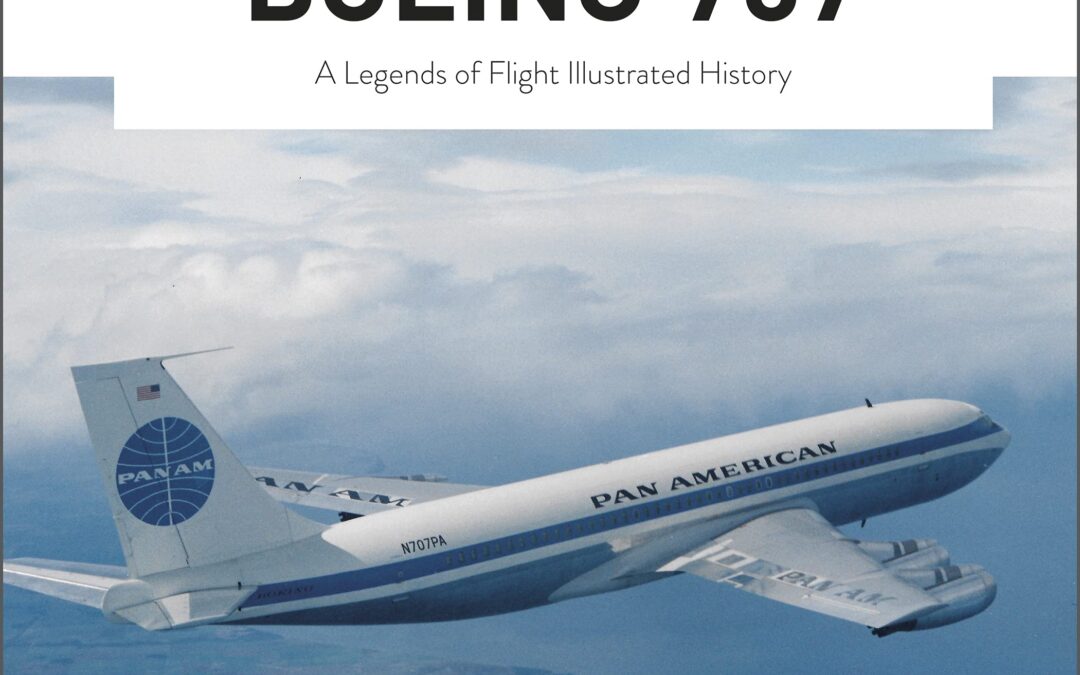
Beginning in the late 1950s, the Boeing 707 revolutionized passenger aviation like almost no other aircraft, as the elegant four-engine aircraft made it possible to serve intercontinental long-haul routes quickly and economically. This volume in the Legends of Flight series examines the history of this classic jet aircraft, whose memorable design has survived to this day, its basic features still recognizable in the Boeing 737. The history of 707 operations is presented in detail, as is the use of the type by various world military forces and governments—and its famed use as the US presidential Air Force One in the 1960s through the 1980s. Its use by many of the world’s most famous airlines, including American, TWA, Pan Am, Northwest, Continental, Air France, British Airways, Lufthansa, Cathay Pacific, and Air India, is also covered. Technical specifications for the 707, the Dash 80 prototype, the Boeing 720 (derived from the 707), the aerial refueler KC-135, and E-3 Sentry, as well as contemporaneous photographs, bring to life the fascinating history of Boeing’s first commercial jetliner

Rare views of the beginnings of the historic space program, selected and presented by two leading space flight authorities
After the excitement of the first Moon landing, the U.S. space program took an ambitious new direction closer to home: NASA’s Space Shuttle program promised frequent access to Earth orbit for medical and scientific breakthroughs; deploying, repairing, and maintaining satellites; and assembling a space station. Picturing the Space Shuttle is the first photographic history of the program’s early years as the world’s first spaceplane debuted.
Showcasing over 450 unpublished and lesser-known images, this book traces the growth of the Space Shuttle from 1965 to 1982, from initial concept through its first four space flights. The photographs offer windows into designing the first reusable space vehicle as well as the construction and testing of the prototype shuttle Enterprise. They also show the factory assembly and delivery of the Space Shuttle Columbia, preparations at the major NASA field centers, and astronaut selection and training. Finally, the book devotes a chapter to each of the first four orbital missions, STS-1 through STS-4, providing an abundance of seldom-seen photos for each flight.
Mostly selected from J. L. Pickering’s personal archive, the world’s largest private collection of U.S. human space flight images, the high-quality photographs in this book are paired with veteran journalist John Bisney’s detailed descriptions and historical background information. The book also includes images of NASA and shuttle contractor booklets, manuals, access badges, and press kits, as well as a foreword by Robert Crippen, the pilot of the first Space Shuttle flight. Picturing the Space Shuttle re-creates the excitement of an era in which the possibilities of space exploration seemed limitless.

The world will always remember Neil Armstrong and Buzz Aldrin for their first steps on the moon, yet few today hold in respect the sites that made these and other astronauts’ journeys possible. Across the American landscape and on the lunar surface, many facilities and landing sites linked to the Apollo program remain unprotected. Some have already crumbled to ruins–silent and abandoned. The Final Mission explores these key locations, reframes the footprints and items left on the moon as cultural resources, and calls for the urgent preservation of this space heritage.
Beginning with the initiation of the space race, the authors trace the history of research, training, and manufacturing centers that contributed to lunar exploration. From the early rocket test stands of Robert H. Goddard, to astronaut instruction at Meteor Crater, to human and primate experiments at Holloman Air Force Base, innumerable places proved critical to developing the equipment for exploring space, surviving the journey, and returning to Earth safely. Despite their significance to the history of human spaceflight, many landmarks face the threat of damage or destruction. Most alarming is that the rapid advancement of technology renders stations obsolete long before they are deemed worthy of preservation. Moreover, the lack of precedence for protecting off-planet artifacts poses a unique challenge for space archaeology. While NASA’s 2011 recommendations for spacefarers suggest avoiding close proximity to this cultural landscape, the authors advocate stronger routes of preservation and present models for safeguarding space history–both on Earth’s surface and beyond.
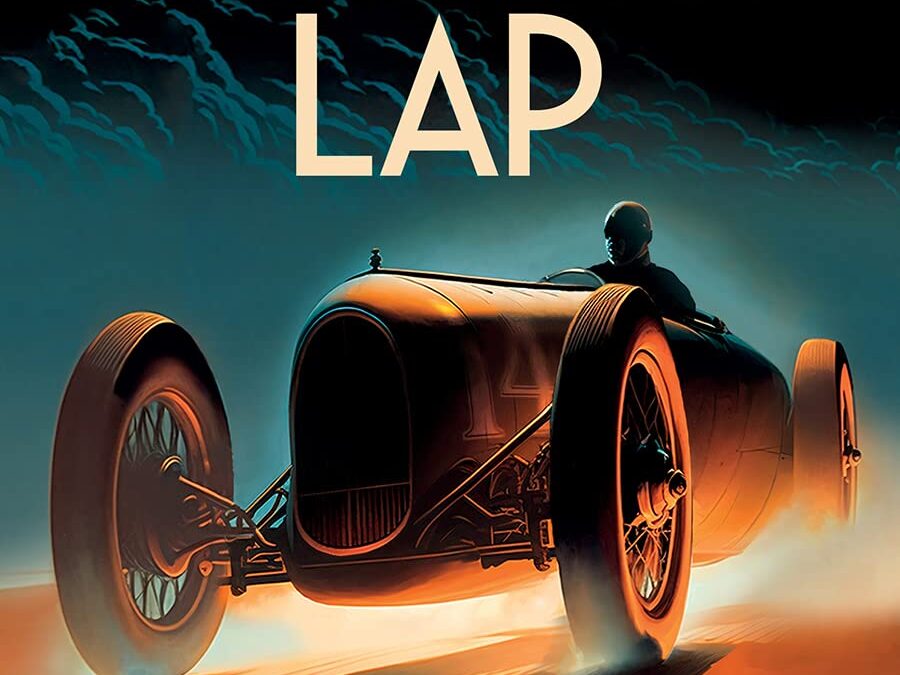
The Last Lap is a gripping inquest into the fast life and mysterious death of racing driver Pete Kreis, infamously killed in practice at the celebrated 1934 Indianapolis 500. In a compelling narrative that reads like a novel, author William Walker’s lifelong obsession with Kreis’s mysterious demise has created a rich story line that takes readers back to the glamorous and dangerous times that marked the beginning of automotive competition.
Much more than a motor racing story, The Last Lap is the tale of a boy who rises from the obscurity of back country Tennessee roads to compete in the world’s fastest and most celebrated races, and the parallel tragic collapse of a rich and powerful Southern family.
Piloting a front-drive race car in practice, Kreis crashed into the wall of Turn One, rode along the top of the retaining wall for seventy-five feet, and careened down an embankment at the south end of the oval. As the car smashed into a tree in the backyard of a nearby house, both men were killed. The next year, an impromptu “coroner’s jury” of Indy drivers and Speedway experts held an intense review of the accident, and they concluded that Kreis’s demise was “the strangest death in all racing history.”
Lifelong racing fan and acclaimed historical author, Walker’s (Betrayal at Little Gibraltar) search to solve the mystery surrounding Kreis’s death has spanned three-quarters of a century and too many miles to count. Walker’s fascination with the mysterious crash is driven by more than a love of racing–Kreis is a distant cousin. The dynamic, nonfiction narrative is the result of a decades long quest in search of the truth—the real story of Pete Kreis, his colorful racing career, and his tragic death.

Porsche 356: 75th Anniversary relates the full story of Porsche’s original sports car from the first Gmund coupe to today’s beloved collector car.
Ferdinand Porsche was a brilliant engineer who, prior to World War II, had been involved in a variety of significant automotive engineering developments including the first hybrid drive vehicles. From the early 1900s, Porsche was developing racing cars including the Mercedes SSK and the mighty Auto Union Grand Prix. During this period, Porsche also developed the groundbreaking Volkswagen, which would prove critical to his postwar, namesake automobile manufacturer.
The Typ 356 was developed by Ferdinand’s son “Ferry” Porsche and introduced in 1948. Though the rear-engine layout was based on the Volkswagen, most similarities ended there. The 356 had a unique chassis, higher performing engine, and a handsome wind-cheating body. Little known outside Germany initially, by the early 1950s the 356s were lauded for their excellent handling, build quality, and growing volume of competition successes.
Porsche’s 356 evolved over its 17-year life through four distinct series: pre-A, A, B, and C, with coupes, cabriolets, Speedsters, Hardtops, and Roadsters among the many body variations. Equipped with the “Carrera” 4-cam engine, the 356 was a force in sports car racing. Dedicated competition models were developed beginning in 1953, and the Rennsport Spyders dominated road racing, endurance, and hill climb events for over a decade.
The 356 story includes a cast of fascinating characters, from those engineers who designed the cars, to race drivers who built the “giant-killer” mystique, to owners like James Dean and Janis Joplin who fell in love with the little bathtub-shaped sports cars. From titled European gentlemen in the 1950s to movie stars like Paul Newman and Steve McQueen in the 1960s, the first Porsches attracted enthusiasts and racers alike. Today, the car has an even wider following among collectors including Porsche fans like Jerry Seinfeld and Jay Leno. “356 Fascination” continues with ongoing restoration efforts, vintage racing, and an “Outlaw” movement, all enhanced by large-scale events that celebrate the car’s history.
Porsche 356 75th Anniversary tells the in-depth story and is a must-have book for anyone that loves Porsche and sports car history.














